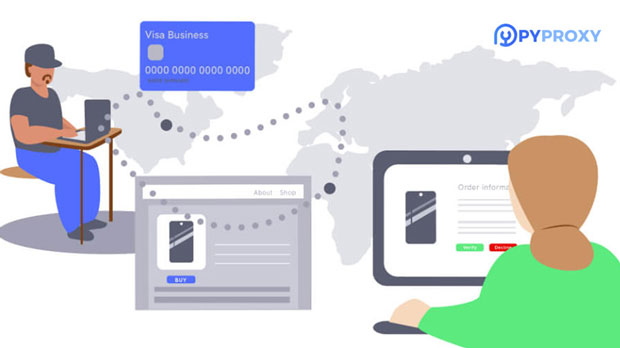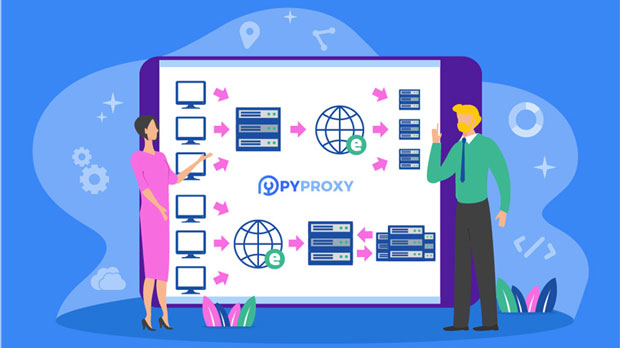Is the latency of free proxy hosting too high and can Socks5 proxy reduce the latency?
In today’s fast-paced digital world, latency plays a crucial role in the performance of internet services, particularly for users who rely on proxy servers for anonymity or access to restricted content. Free proxy hosts, while accessible and easy to use, often suffer from high latency, leading to slow browsing experiences and connection instability. But can sock s5 proxies help to reduce this latency? SOCKS5, as a popular proxy protocol, offers various advantages in terms of speed, flexibility, and security, making it a potential solution for latency issues. This article will explore the impact of free proxy hosts on latency, and how SOCKS5 proxies might mitigate these challenges for users seeking faster and more reliable connections. The Impact of Free Proxy Hosts on LatencyWhen discussing proxy servers, latency is one of the most common complaints, especially when using free proxies. Latency refers to the delay before a transfer of data begins following an instruction for its transfer. A high-latency connection means that users experience delays in their interactions with websites or online services, which can be frustrating, particularly for activities like online gaming, streaming, or browsing. Free proxy hosts often come with a trade-off: while they are cost-free, they tend to be overloaded with users. This overburden results in slower response times, as the available bandwidth is shared among many individuals. As more users connect to these free proxy servers, the server’s performance declines, and the delay becomes more noticeable. Additionally, free proxy hosts are often located in regions with limited infrastructure or outdated hardware, which further exacerbates latency issues.Moreover, many free proxies do not provide high-quality security protocols, which can lead to additional delays due to inefficient encryption methods. These factors combined make free proxies less than ideal for users who require low-latency connections.Understanding SOCKS5 ProxiesSOCKS5 is a protocol that routes internet traffic through a proxy server, providing users with anonymity and the ability to bypass geo-restrictions. It is the latest and most advanced version of the SOCKS protocol, offering several advantages over its predecessors. Unlike HTTP or HTTPS proxies, which only handle specific types of traffic (e.g., web browsing), SOCKS5 is more flexible and can manage any type of internet traffic, including email, file transfers, and streaming.The main difference between SOCKS5 and other types of proxies lies in its enhanced capabilities, including better handling of different protocols and support for a variety of authentication methods. SOCKS5 proxies can provide greater control over the connection, and because they allow direct communication with the target server without modifying data packets too much, they generally introduce less overhead.Can SOCKS5 Proxies Reduce Latency?SOCKS5 proxies can indeed help reduce latency, but their effectiveness depends on several factors, including the quality of the proxy server, the distance between the user and the server, and the overall network traffic load. Here’s why SOCKS5 might offer a reduction in latency compared to free proxies:1. Lower Overhead: SOCKS5 proxies are designed to be lightweight in terms of protocol overhead. They do not modify the data packets as much as other types of proxies, which means there’s less processing required, and consequently, lower latency. This is particularly beneficial for real-time activities like video calls or online gaming, where latency is a critical factor.2. Better Performance in High-Traffic Scenarios: Unlike free proxies, which can quickly become congested with multiple users, SOCKS5 proxies can handle higher loads more efficiently, especially when set up on dedicated servers. Premium SOCKS5 proxies, which are often paid services, tend to have fewer users, leading to a more stable and faster connection.3. Support for UDP (User Datagram Protocol): One of the advantages of SOCKS5 is that it supports UDP, unlike some other proxy protocols that only support TCP. UDP is often used for applications where low-latency communication is necessary, such as gaming and streaming. By routing traffic via UDP, SOCKS5 proxies can significantly reduce the time it takes for data to reach its destination.4. Less Encryption Delay: While SOCKS5 can provide some degree of encryption, it does not enforce the heavy encryption typically used by VPN services. This means that SOCKS5 proxies often introduce less encryption overhead, reducing the overall delay. This makes them an attractive choice for users who want a balance between anonymity and speed.5. Geographical Flexibility: SOCKS5 proxies can be located in different regions, allowing users to connect to servers that are closer to their geographical location. This geographical flexibility can help reduce latency because data does not need to travel as far to reach its destination. The closer the proxy server is to the user, the less delay there will be.Comparing SOCKS5 to Other Proxy ProtocolsIt’s important to compare SOCKS5 to other proxy types, such as HTTP, HTTPS, and SOCKS4, to fully understand its advantages in reducing latency.1. SOCKS5 vs. HTTP/HTTPS Proxies: HTTP and HTTPS proxies are primarily designed for web traffic. They can be faster for web browsing, but they are not suitable for other types of internet traffic. They also tend to modify data packets more extensively, which can introduce additional delays. SOCKS5, being more flexible and less intrusive, generally provides better performance across various use cases.2. SOCKS5 vs. SOCKS4: SOCKS5 is an improvement over SOCKS4 in several ways. While SOCKS4 is limited to TCP connections and does not support authentication or UDP traffic, SOCKS5 can handle both TCP and UDP traffic, offers better security, and supports a wider range of applications. The increased flexibility and performance of SOCKS5 over SOCKS4 can lead to a more responsive connection.3. SOCKS5 vs. VPNs: While VPNs can provide additional privacy and security features, they often introduce more overhead due to encryption and tunneling protocols. Depending on the server load and the encryption methods used, VPNs can sometimes result in higher latency than SOCKS5 proxies, especially when streaming or gaming.Conclusion: Can SOCKS5 Proxies Help Reduce Latency?SOCKS5 proxies can be an effective solution for reducing latency compared to free proxy hosts. They offer lower overhead, better handling of traffic, and support for real-time applications like gaming and streaming. The flexibility of SOCKS5 allows users to select proxies that best suit their needs, whether they require better performance or additional security. While free proxies may suffer from high latency due to overcrowded servers and limited resources, SOCKS5 proxies provide a more reliable and efficient alternative. However, users should always consider the quality of the SOCKS5 service, as premium providers tend to offer the best performance.
2025-03-05

























































